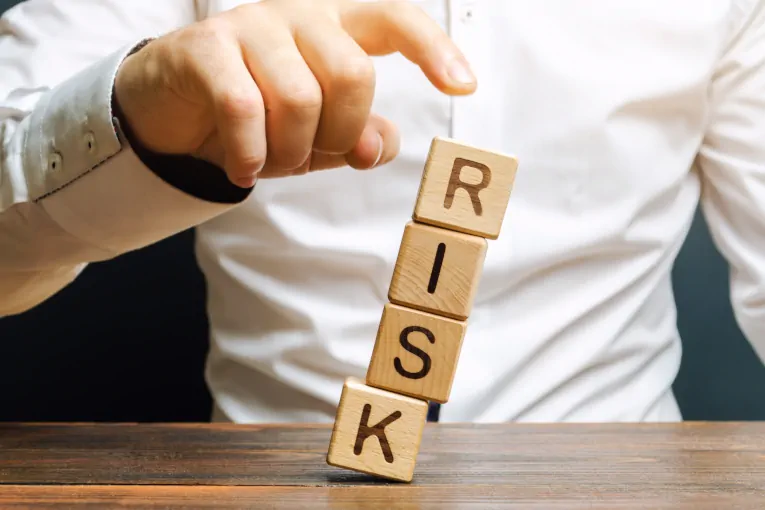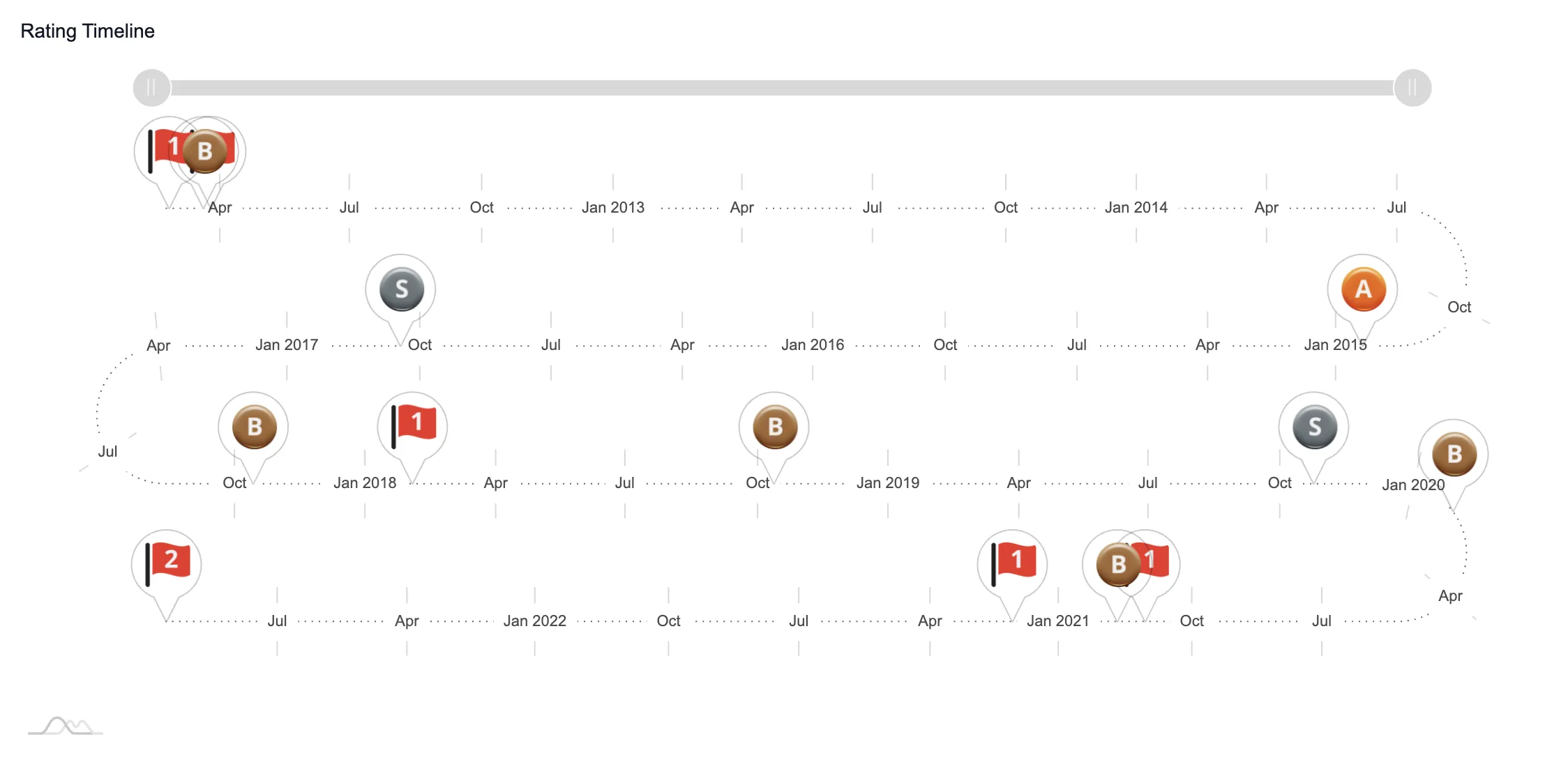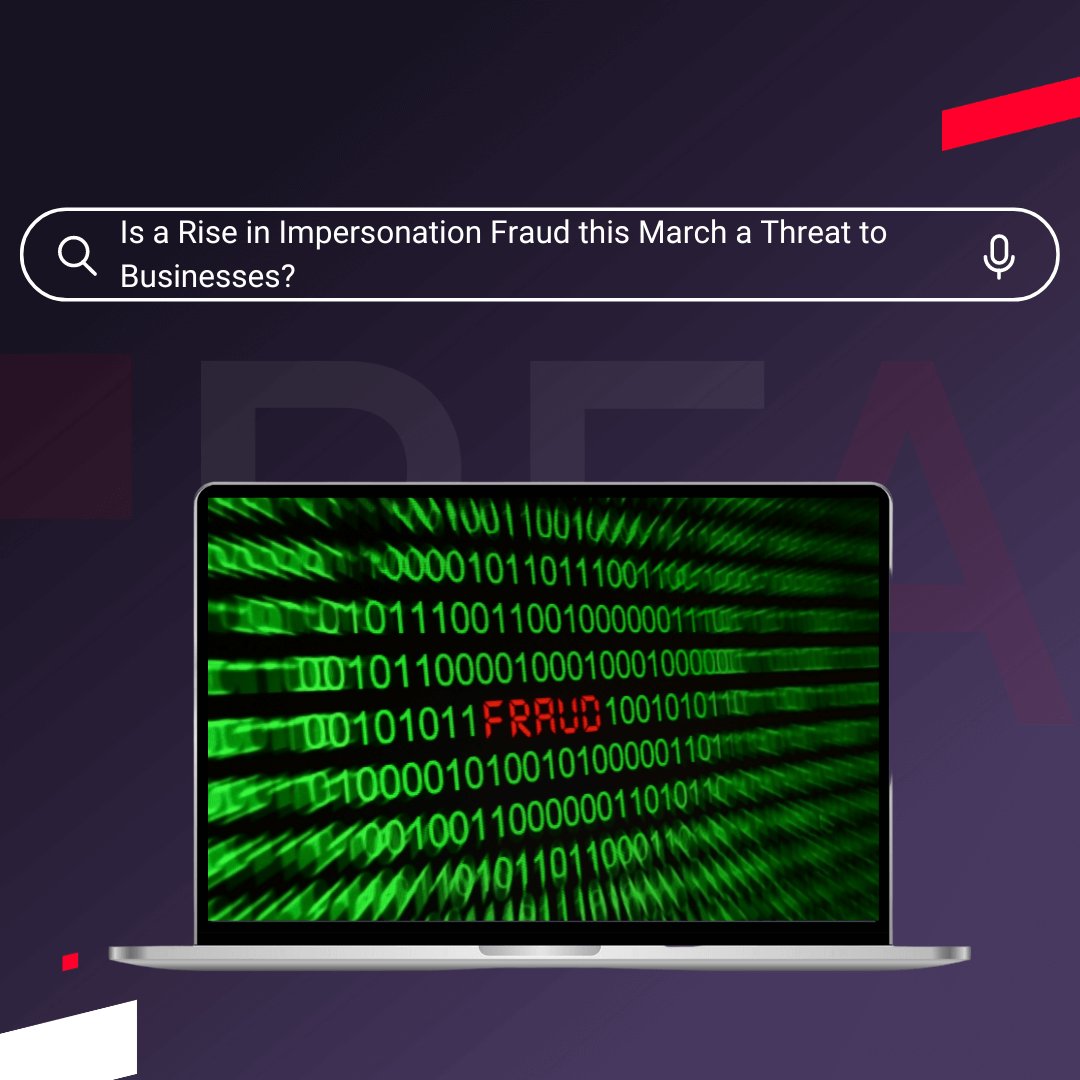Recessions are a very worrying time for businesses. The reduced faith in the economy and reduction in spending that they bring on inevitably leads to a rise in business distress and potential that they themselves will become insolvent.
The 2008 financial crisis is proof of this. During this time, UK insolvencies reached a record number of 28,000.
The economy is once again under incredible pressure. We predict that the UK will enter a recession during Q4 2022 and will experience around 27,000 insolvencies.
This number could be even higher if economic conditions get worse.
If one of your clients becomes insolvent and owes you money in unpaid invoices, then it’s bad news. You’re unlikely to ever get what you are owed back, and you’ll have to absorb the loss as bad debt.
Companies that experience bad debt in this way are three times more likely to go insolvent themselves within 12 months.
This article helps business owners understand what insolvency risk is and how they can protect their businesses from it.
What Is Insolvency Risk?
Insolvency risk is the probability that one or more of your customers will be unable to meet their financial obligations to you within a given timeframe. It is sometimes known as bankruptcy risk or credit risk.
These financial obligations might include:
- Invoices
- Staff wages
- Buying new services and materials
- Payment
What Is Business Insolvency?
There are two ways to define commercial insolvency:
-
Cash flow insolvency is when a business cannot make payments due to insufficient cash flow.
-
Balance sheet insolvency is when a company’s liabilities exceed its assets.
The insolvency process aims to get as many funds back for business creditors as possible. There are several routes for achieving this:
-
Company voluntary arrangement (CVA): this is when directors voluntarily put the business into insolvency.
-
Receivership: this is when a secured creditor appoints an official receiver to liquidate the business.
-
Compulsory liquidation: this is when a company is ordered to close down by a court and its assets are sold to pay creditors.
-
Company voluntary liquidation (CVL): this is when at least 75% of shareholders vote in favour of liquidation.
-
Administration: this is when an administrator is appointed to try and return the business to profitability and repay creditors.
What Causes Business Insolvency?
Insolvency can be caused by a range of factors. Some common examples include:
Cash flow issues
If the business has more money going out than coming in, then it will struggle to meet its financial obligations. One short-term solution for this is to borrow money. This helps the business avoid insolvency but often increases the financial pressure it is under, as they are now required to repay the money borrowed.
Increased competition
More or larger competitors could reduce your market share, which means fewer revenue streams. You could overcome this by investing in staff training, research and development or marketing. However, these initiatives require investment which may not be available if revenues are down.
Loss of key customers
If one of your customers becomes insolvent, you will lose a chunk of revenue. Worse still, finding replacement customers is 6-7 times more expensive than retaining existing customers.
Loss of key employees
Losing experienced or highly skilled employees can be a disaster. You may struggle to operate efficiently, complete work or fail to deliver it to a high enough standard. This can suppress revenues and cause clients to look for new suppliers. A study recently revealed that 20% of employers are likely to make redundancies in the next year which can cause the loss of key people.
Poor sales
Buyer confidence is often low during a recession. Businesses and consumers facing economic challenges and increased expenses reign in their spending, which can impact some companies’ bottom lines.
Examples of Insolvency Risk
Here are some recent examples of businesses that have recently become insolvent.
MADE.COM
Made.com is a digital lifestyle brand that sells furniture. The company’s business boomed during the pandemic, and it was listed on the London Stock Exchange for £800m in June 2021.
But the company started facing supply chain issues and customer confidence was hit by post-pandemic economic difficulties. As a result, the company issued four profit warnings throughout 2022.
The company’s directors filed for administration on 1 November 2022.
Red Flag Alert uses its unique algorithm to predict a company's risk, scoring Made.com with 1 and 2 red flags in recent years. Companies with 2 red flags come with all the negative characteristics of a business with 1 red flag, plus other significant risk factors such as county court judgements. Red Flag Alert advise guarantees, credit insurance and credit limits for companies with 1 or 2 red flags.
McColl’s Retail Group plc
The UK-wide chain of convenience stores appointed an administrator in May 2022.
The company had posted five profit warnings since December 2018. Although it had sales of almost £1.3 billion, it wasn’t able to generate enough profit to service its costly debts and dividend policy. The 2018 and 2019 dividends were paid out of reserves.
The company’s unsecured creditors lost a combined £15.5 million.
Supermarket giant Morrisons has acquired all of the company’s assets outside of Scotland.
Red Flag Alert identified this risk, scoring McColl’s Retail Group with 1 and 2 red flags in recent years with credit insurance and limits advised.
Missguided Limited
This one-time rising star of the e-retail industry also entered administration in May.
Prior to the pandemic, the company had invested in high street stores. This may have contributed to its difficult financial situation.
The company’s 2020 sales were just over £201 million. But it had moved its accounting period—this can often be a sign of financial difficulties. In reality, the firm had only made nominal profits since 2015.
The business was acquired by fashion retailer Mike Ashley in June 2022.
What Are Credit Risk Warning Signs?
You can often predict if a company will become insolvent by looking at its balance sheet. Here are some of the factors that indicate high bankruptcy risk.
High leverage
If the firm has debts that exceed its assets and it can’t meet these obligations then it is insolvent. Watch out for businesses whose debts seem very high compared to their income.
Poor liquidity
If a business doesn’t have enough cash on hand then it could experience cash flow problems. Companies can raise working capital to plug the gap. But this can be expensive due to interest payments and lead to further financial difficulties.
Legal action
If a firm has had CCJs or other forms of court action levelled against them then it is a sign that it is struggling to meet its obligations.
Bad debt
As previously mentioned, if a company has experienced bad debt, it is more likely to experience insolvency itself.
Tight profit margins
This is a common problem amongst firms at the moment. High business expenses and suppressed revenues leave companies with very little spare cash that they can use if they are hit by a financial shock.
Profit warnings
In normal circumstances, public companies that go out of business usually end up issuing at least two profit warnings. They are a clear sign of major financial difficulties.
Changes to accounting periods
Missing or changing accounting periods usually indicates either that the firm has poor management practices or that it is trying to hide financial issues.
Fixed charges
This is when company directors ensure that they will get paid first if the business becomes insolvent. Directors in this position are more likely to use high-risk business strategies. As a result, the firm presents higher credit risk exposure.
Which Sectors Have Higher Insolvency Risk?
Some sectors are more likely to have higher levels of insolvency than others.
If you work with companies in these sectors, you are more likely to face insolvency risk.
In the first half of 2022, construction, accommodation and food service activities and wholesale and retail were the sectors that experienced the highest number of insolvencies.
Here’s why:
Construction
Construction projects involve many different specialist trades all working together. This often leads to long and complex supply chains.
If one of these companies becomes insolvent it can have huge repercussions. We’ve already explained that businesses that experience bad debt are more likely to become insolvent within 12 months.
For example, if one construction firm becomes insolvent it can pass its debt on to other companies in the supply chain. They then go out of business themselves and in turn pass bad debt on to their creditors. This creates a ripple of bad debt that has the power to decimate supply chains.
Red Flag Alert can help your business perform due diligence on suppliers with our innovative platform.
Wholesale and Retail
The wholesale and retail trade sector is broad, consisting of many different types of businesses.
One feature which many of them share is a susceptibility to energy costs. Rapidly rising gas prices and increased fuel usage means that the wholesale sector accounted for 14% of all UK insolvencies in the first half of 2022.
Retail also suffers when consumer confidence is low. A recession means that people are likely to curtail their spending. Non-essential retail costs are usually one of the first things they cut back on.
Accommodation and food service activities
These businesses need to heat their premises to make them comfortable for consumers and use gas in preparing food. The sector has therefore been hit hard by rising gas prices.
Like retail, this sector represents non-essential spending which consumers are likely to cut back on during hard times.
How to Mitigate Credit Risk
There are several ways that you can reduce the level of bankruptcy risk your business is exposed to.
Find more and better customers
If your current customers pose high levels of bankruptcy risk then it’s a good idea to find new ones in better financial health.
Only work with financially health companies
Start to build financial health scores into your ideal customer profiles. This ensures that your sales team only approaches businesses that pose a low bankruptcy risk.
Get accurate credit scores based on real-time data
Get a data supplier with accurate data that is updated in real-time. For example, our data is updated more than a million times per day from over 200 sources. This allows you to spot insolvency warning signs and perform reliable company credit checks.
Monitor clients
Tools like Red Flag Alert also allow you to set up monitoring alerts. This warns you as soon as a client’s financial situation deteriorates.
Take steps to protect your business
If a client’s financial situation does deteriorate, it’s time to take action. Here are some things you can do to reduce the bankruptcy risk posed by your customers:
- Conduct further monitoring
- Propose a repayment plan
- Issue late fees
- Suspend services
- Tighten your credit terms
- Withdraw credit
Protect Your Business from Insolvency Risk with Red Flag Alert
In our Q3 Intelligence Report, we highlight that the UK is likely to enter a two-quarter recession.
At times like these, you need to seek professional advice. You also need tools to protect your business from insolvency risk.
Red Flag Alert provides the UK’s best insolvency risk services. Our database features:
- Data on every UK company
- AI algorithm that uses 15 years of company data to identify business insolvency
- Real-time data updates from global sources
- Monitoring and alerts tools to assess risks
- Additional AML checks and sales prospecting tools
Companies use Red Flag Alert’s insolvency risk services to check which clients and potential clients pose a credit risk.
Avoid bad debt and see how Red Flag Alert can protect your business by booking a demo with our team.
Or you can read our Q3 Intelligence Report to understand the scale of insolvency risk facing the UK.



-4-2-3.webp)
-6-2-4.png)
-6-2.webp)